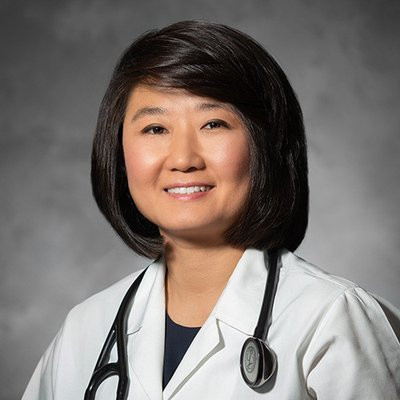7 reasons you should look at regenerative medicine

Introduction
When you have a chronic joint or musculoskeletal pain condition, surgery is not always the best option. In fact, some regenerative medicine procedures for joints can help treat and prevent these conditions without having to undergo invasive surgery or take prescription medications that may have side effects. So if you want to avoid surgery or delay it until your condition has improved significantly, consider trying regeneratively based treatments that don’t require any injections into the body or removal of tissue during the procedure itself. With regenerative medicine treatment options available today, there’s no need to suffer from chronic pain any longer!
Dr. Suhyun An is the director of the Campbell Medical Clinic in Houston, Texas. Dr. An has a well-established reputation in the field of regenerative medicine and is a trusted source by her patients and colleagues. She specializes in regenerative therapies and works with her patients to develop unique treatment plans based on the individual’s condition and needs.
Dr Suhyun An Regenerative medicine could help treat and prevent conditions such as arthritis and joint pain, tendon, ligament and muscle injuries, bone fractures and more.
Regenerative medicine is a new field of medicine that uses stem cells to regenerate damaged or diseased tissue. This can be used to treat chronic pain, arthritis and other conditions.
Regenerative medicine uses stem cells taken from your own body or from other sources like umbilical cord blood.
It can reduce pain, heal damaged tissues and even regrow cells to restore their normal function.
Regenerative medicine is the science of using a patient's own cells to regenerate and restore normal function. The field holds enormous promise for treating and preventing conditions such as arthritis and joint pain, tendon, ligament and muscle injuries, bone fractures and more. It's also used to treat cardiovascular diseases such as heart attack or stroke; repair damaged organs like the liver; treat blindness in people with diabetes; help heal wounds from diabetes-related nerve damage [1].
Some procedures require surgery. But regenerative medicine for joints doesn’t need to be invasive and the chances of rejection is almost zero.
Regenerative medicine for joints can be done in two ways: with or without surgery. With regenerative medicine, the patient is administered a set of injections that stimulate their body to repair the damaged tissue by themselves. This kind of treatment is minimally invasive and doesn’t require surgery since there’s no actual foreign substance being injected into the body (like an artificial implant).
Non-surgical regenerative medicine for joints uses your own cells to heal damaged tissues around a joint by stimulating them to grow new cartilage; this method requires fewer risks and causes less scarring than surgical methods but it also takes longer because it takes time for your body to naturally heal itself after receiving these injections. Regenerative Medicine is non-invasive, meaning there aren't any incisions made in order for someone else's cells/tissue/etc., "foreign" substances such as metal pins or screws inserted into them (as would happen if one had undergone surgery), nor does anyone need any extra medications beyond those prescribed by their doctor during recovery time since none has been administered directly into their bloodstream through injection procedures."
Dr. Suhyun An Regenerative medicine can help you avoid or delay surgery. This may save you time and money in the long run.
If you are living with a degenerative condition, you may be considering surgery to help alleviate the pain. But surgery can come with a hefty price tag—not only in terms of the cost of the procedure itself but also in terms of lost wages and time off work.
In addition to these costs, there is also an increased risk for infection when undergoing surgery, which requires further medications and even more time off work or other activities. Furthermore, those who have undergone multiple surgeries often need extensive physical therapy afterwards due to muscle atrophy that occurs during long periods of immobility (in bed post-surgery). All told, this can significantly reduce your quality of life for several weeks or months after surgery!
Regenerative medicine offers an alternative solution: It's noninvasive, so it doesn't involve invasive procedures like incisions or anesthesia; it also uses your own cells rather than introducing any foreign substances into your body; so there's no need for physical therapy afterwards!
Regenerative medicine procedures are minimally invasive.
Regenerative medicine procedures are minimally invasive. Minimally invasive procedures can be performed in the doctor's office, and some have been performed on an outpatient basis. These treatments require less recovery time than traditional surgical methods, which means your body will be able to heal more quickly!
With regenerative medicine, patients experience less pain and a faster recovery time than surgery would allow.
-
With regenerative medicine, you can experience less pain and a faster recovery time than surgery would allow.
-
You will no longer have to worry about surgery or medication for your condition.
-
There’s also no risk of infection or any other complications associated with traditional surgeries or medications that may cause further side effects in the future
Physical therapy offers many benefits to patients with chronic joint pain, but it may not be the right treatment for everyone.
Physical therapy can help with chronic joint pain, but it may not be the right treatment for everyone.
If you are experiencing chronic joint or musculoskeletal pain, give regenerative medicine a try.
If you are experiencing chronic joint or musculoskeletal pain, give regenerative medicine a try. Physical therapy is an excellent way to treat these conditions, but sometimes it's not enough. If that's the case, regenerative medicine can help you get back on your feet and back to your normal routine.
Regenerative medicine offers several benefits not offered by traditional physical therapy:
-
Improved range of motion
-
Cut down on inflammation
-
Decreased pain
Conclusion
You may have heard of some of the potential benefits of regenerative medicine, but it’s important to understand how these treatments work. Doctors can use your own DNA to regrow tissues and repair damaged joints or help heal broken bones. A regenerative medicine procedure doesn’t require surgery and will not cause rejection, so you don’t need worry about any side effects or complications from the treatment itself.
































